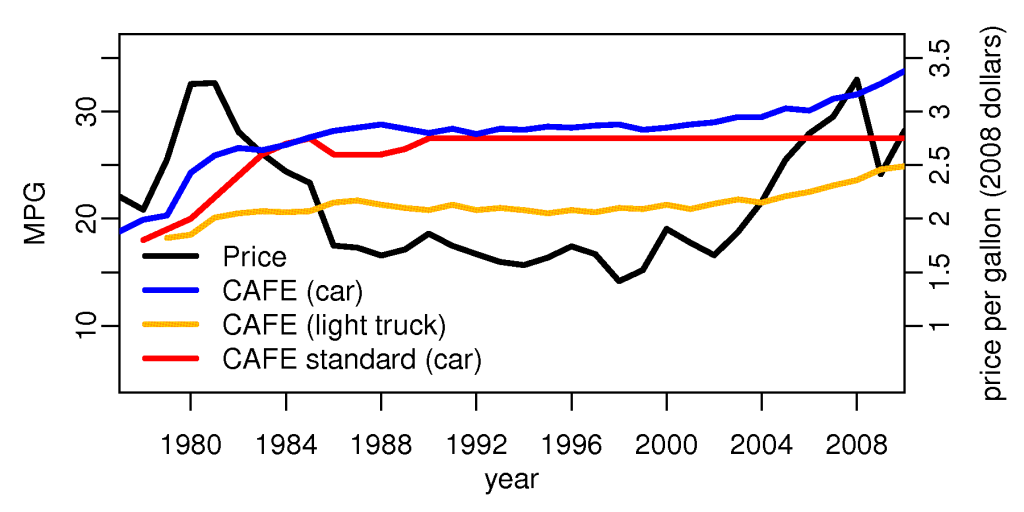Background and Role in U.S. Fuel Economy
•Corporate Average Fuel Economy (CAFE) were first enacted in 1975 in the United States in an attempt to improve the average fuel economy for cars and light trucks sold in the US. How it works is that if the average fuel economy of a manufacture’s annual fleet of vehicle production falls below the CAFE standard, then the manufacturer must pay a penalty. The current penalty is $5.50 per 0.1 miles per gallon under the standard. The automotive manufacturer has to pay this penalty for every vehicle produced in the United States. In addition to this penalty, there is also a “Gas Guzzler Tax” that is put place on individual passenger car models that get less than 22.5 mills per gallon. [1]
•The graph below shows the effect that the CAFE standards have made on the automotive industry. The National Academy of Sciences wrote a report on the effects of the CAFE standard. It was concluded in this report that in the absence of any fuel economy regulation program like CAFE, automotive fuel consumption would have been 14% greater than its actual value in 2002.
•This graph shows that from 1979-1982 the fuel economy rose as the CAFE standard rose dramatically and the price of fuel increased.
•It also shows that from 1984-1986 the fuel economy rose as the CAFE standard rose and the price of fuel decreased rapidly.
•In addition, from 1986-1988 the fuel economy rose at a significantly subdued rate and eventually leveled off as the price of fuel fell and the CAFE standard was relaxed.
•Many automotive companies like Mercedes-Benz, BMW, and Land Rover to name a few, choose to pay the penalty and produce vehicles with lower mpg rating than the CAFE standards.
•The CAFE standard not only lessens the United States dependance on foreign oil, simply by not using as much, but it also significantly reduces emissions and pollution of green house gases associated with transportation that cause detrimental climate change. For more of CAFE standards visit the EPA’s page.
Author: Matt Smith
